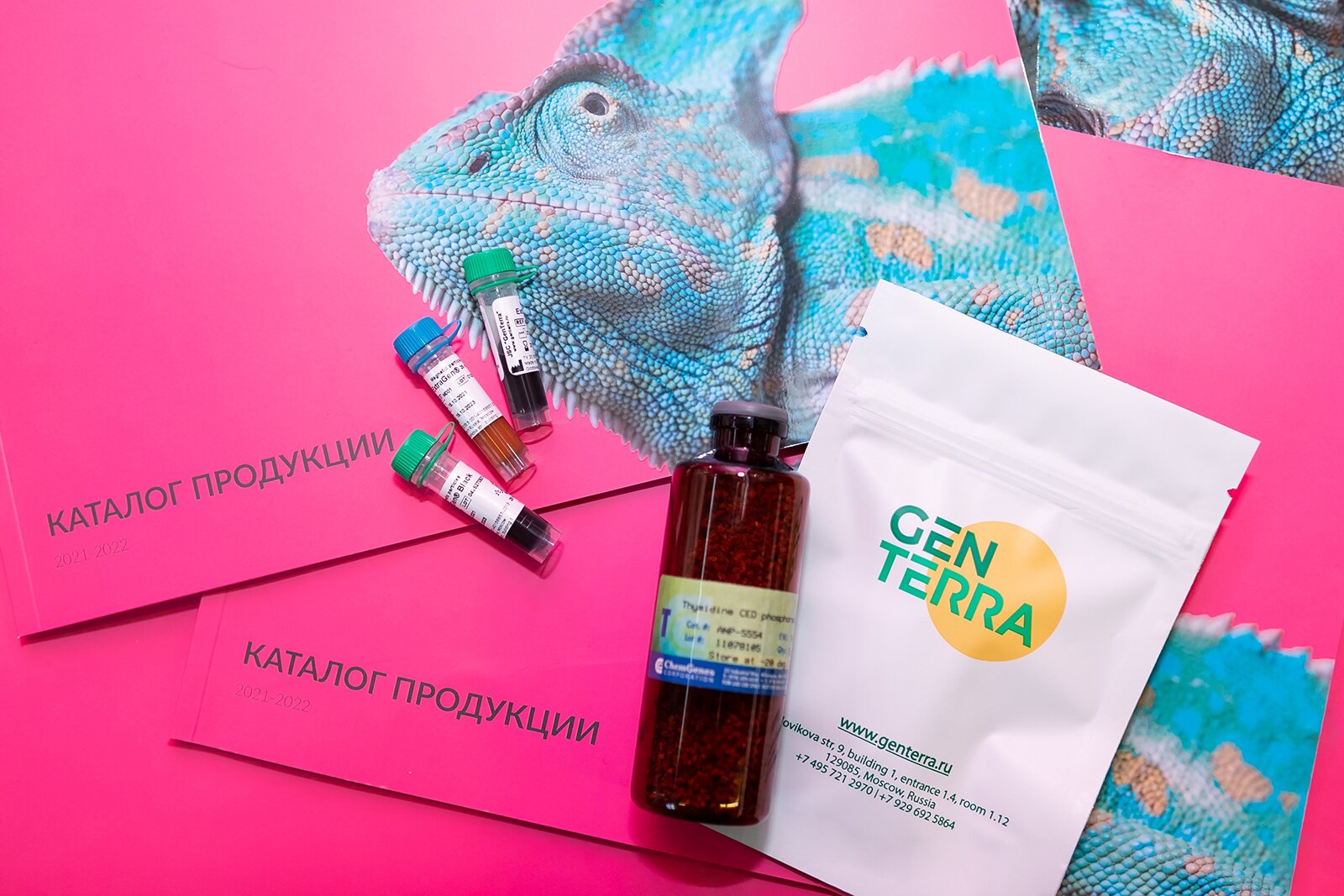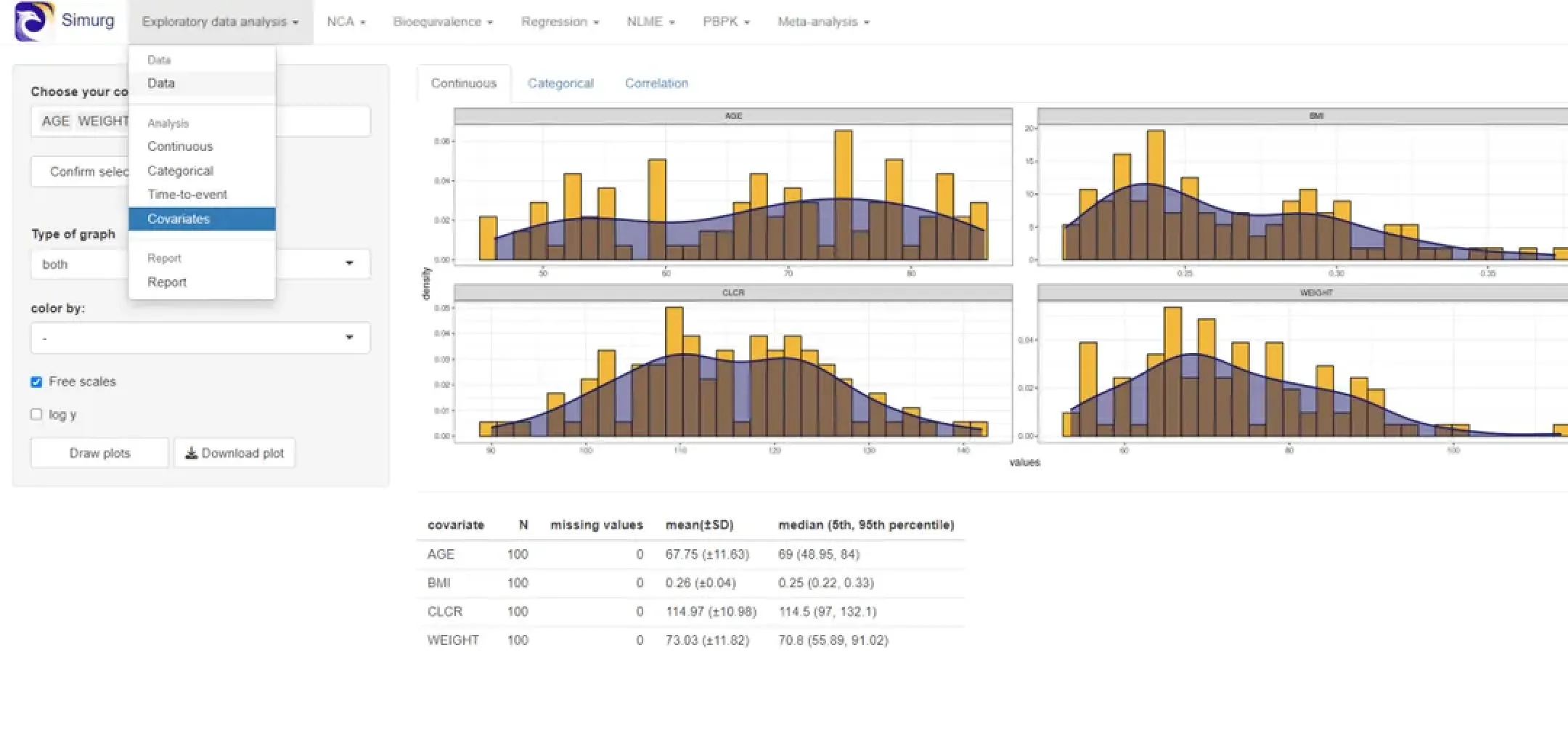NASHA LABA possibilities
Back to search results
Fluorescently labeled probes and samples
from 5 070 ₽
Manufacturer:
Genterra
Location:
Moscow
Empirical Formula:
-
CAS-number:
-
Reagent type:
Индивидуальное вещество
Characteristics:
Applying:
from 5 070 ₽
Go to the manufacturer's website
Fluorescent probes are an oligonucleotide with a fluorescent label and a suppressor that can bind to the DNA chain during amplification. When the probe is in a free state, both dyes are located close to each other, therefore, fluorescence quenching occurs. During PCR, at the stage of chain elongation, the hybridized probe is cleaved by a polymerase that has 5’-exonuclease activity, the dyes are separated, and a fluorescent signal proportional to the amount of the amplified product is observed. The fluorescence intensity increases in each cycle in proportion to the probe splitting rate. The use of probes in PCR makes it possible to increase the accuracy and selectivity of the reaction.
A wide range of fluorescent dyes: FAM, R6G, VIC, HEX, JOE, TAMRA, ROX, Cy 5 and Cy5.5
The possibility of multiplex analysis of multiple DNA targets in one test tube.
High efficiency of PCR-RV.
Probe quality control: HPLC purification and mass spectrometry verification
A wide range of fluorescent dyes: FAM, R6G, VIC, HEX, JOE, TAMRA, ROX, Cy 5 and Cy5.5
The possibility of multiplex analysis of multiple DNA targets in one test tube.
High efficiency of PCR-RV.
Probe quality control: HPLC purification and mass spectrometry verification

Набор реагентов для синтеза первой цепи к ДНК Genta-RT, GRT-kit-100
from 10 000 ₽
Genta-RT kit представляет собой набор реагентов для проведения синтеза первой цепи кДНК на матрице РНК. Набор включает в себя: in silico модифицированный гомолог обратной транскриптазы вируса лейкемии мышей Молони (MMLV) – Genta REV M ревертазу; Олиго(dT)18 праймер; воду для ПЦР и 2 вида 5-кратного реакционного буфера (включающего в себя дНТФ и ДТТ):
5х ОТ-буфер R – наличие Random-праймеров в реакционном буфере позволяет проводить синтез тотальной кДНК.
5х ОТ-буфер – требуется добавление специфических праймеров для синтеза целевого фрагмента кДНК; или добавление Олиго(dT)18 праймера для полиаденилированной РНК.
Гентерра
Москва
Produced in: Москва

Смесь дНТФ, 1,76 мМ (1 мл)
Смесь дНТФ представляет собой водный раствор четырех высокоочищенных ,2’-дезоксинуклеозид-5’-трифосфатов (дАТФ, дТТФ, дГТФ, дЦТФ) в эквимолярной концентрации.
Гентерра
Москва
Produced in: Москва

5х Genta LAMP-буфер
from 78 ₽
5-кратный реакционный буфер, подходящий для использования в реакции изотермической амплификации нуклеиновых кислот в форматах LAMP и ОТ-LAMP.
Стандартный 5х Genta LAMP-буфер содержит 25 мМ MgSO4, что соответствует 5 мМ MgSO4 в реакционной смеси.
Гентерра
Москва
Produced in: Москва

Genta TaqF ДНК-Полимераза, 5 000 ед./мл
from 1 300 ₽
Genta TaqF ДНК-полимераза — химически модифицированный рекомбинантный аналог ДНК-полимеразы из термофильной бактерии Thermus aquaticus. Фермент обладает 5’-3’ полимеразной активностью и 5’-3’ экзонуклеазной активностью, но не имеет 3’-5’ корректирующую экзонуклеазную активность. Рекомбинантный фермент Genta TaqF ДНК-полимераза подходит для использования в рутинных ПЦР, включая ПЦР в режиме реального времени.
Genta TaqF ДНК-полимераза инактивирована с помощью химической модификации, что позволяет проводить приготовление реакционной смеси при комнатной температуре. Наличие «горячего старта» повышает специфичность и чувствительность амплификации. Активация полимеразы происходит при её прогревании до 95°C в течение 15 минут.
Гентерра
Москва
Produced in: Москва

5Х Genta qPCR мастер-микс, 250 реакций
from 1 600 ₽
5X Genta qPCR мастер-микс – готовая к использованию смесь для проведения качественной или количественной ПЦР с детекцией результатов в режиме реального времени.
Мастер-микс обеспечивает надежную работу ПЦР в широком спектре приложений. Мастер-микс позволяет проводить ПЦР-РВ в мультиплексном формате.
5X Genta qPCR мастер-микс содержит все необходимые для проведения ПЦР компоненты, включая полимеразу Genta TaqF, дНТФ, Mg2+, краситель SYBR Green I и реакционный буфер.
Для постановки реакции ПЦР в реакционную смесь необходимо добавить только олигонуклеотиды, матрицу и воду.
Химически инактивированная ДНК-полимераза Genta TaqF позволяет проводить подготовительные работы при комнатной температуре и обеспечивает высокоспецифичную амплификацию благодаря возможности проведения «горячего» старта.
Ингибирование активности фермента снимается при его прогревании при 95°C в течение 15 минут.
Гентерра
Москва
Produced in: Москва

Genta TaqF ДНК-Полимераза, 5 000 ед./мл, 1 000 ед.
from 3 900 ₽
Genta Bst ДНК-полимераза — большой фрагмент ДНК-полимеразы Bacillus stearothermophilus (полипептид размером 67 кДа). Фермент обладает 5’-3’ полимеразной активностью, но не имеет 5’-3’ и 3’-5’ экзонуклеазную активность. Genta Bst ДНК-полимераза обладает вытесняющей активностью и может использоваться для изотермической амплификации ДНК в формате LAMP/RT-LAMP.
Оптимальная температура активности фермента — 60-65°C.
Гентерра
Москва
Produced in: Москва

Магнитные частицы ExtraGen, M001
from 180 ₽
Магнитный сорбент ExtraGen® представляет собой водную суспензию твердофазных магнитных частиц на основе оксида железа и оксида кремния. Он предназначен для выделения нуклеиновых кислот из клинических и биологических образцов. Суспензия магнитного сорбента обладает «промежуточной» седиментационной устойчивостью, что особенно важно при использовании материала в автоматических системах выделения ДНК. Частицы ExtraGen® устойчивы к нагреву, сильным окислителям и интенсивным механическим воздействиям (центрифугирование, диспергирование и т.п.). Использование фирменного буферного раствора позволяет хранить частицы при комнатной температуре в течение года без ухудшения их сорбционных свойств. Как показали испытания, сорбент ExtraGen® проявляет высокую эффективность при выделении нуклеиновых кислот как в ручном режиме, так и с использованием автоматических станций.
Гентерра
Москва
Produced in: Москва

Олигонуклеотиды
from 700 ₽
Олигонуклеотиды – короткие фрагменты нуклеиновых кислот, которые широко используются в различных областях ДНК-диагностики (медицинская диагностика, криминалистический анализ, ветеринария, контроль качества продуктов питания и др.). В последнее время широкое распространение олигонуклеотиды получили в качестве лекарственных средств против различных генетических и других заболеваний. Компания ГенТерра производит ДНК- и РНК-олигонуклеотидов в масштабах от нескольких миллиграмм до граммовых количеств, в том числе и модифицированные олигонулеоитды, флуоресцентно-меченые олигонуклеотиды и зонды для ПЦР в реальном времени.
Гентерра
Москва
Produced in: Москва

5Х Genta Taq-AB qPCR мастер-микс, 250 реакций
from 2 500 ₽
5Х Genta Taq-AB qPCR мастер-микс – готовая к использованию смесь для проведения качественной или количественной ПЦР с возможностью детекции результатов в режиме реального времени.
5Х Genta Taq-AB qPCR мастер-микс содержит все необходимые для проведения ПЦР компоненты, включая полимеразу Genta Taq-AB, дНТФ, Mg2+, краситель SYBR Green I и реакционный буфер.
Для постановки реакции ПЦР в реакционную смесь необходимо добавить только олигонуклеотиды, матрицу и воду.
Инактивация полимеразы Genta Taq-AB помощью антител позволяет проводить подготовку смесей при комнатной температуре.
«Горячий» старт обеспечивает повышение специфичности амплификации. Диссоциация комплекса и высвобождение Genta Taq-AB ДНК-полимеразы обеспечивается прогреванием выше 70°C.
Гентерра
Москва
Produced in: Москва

Genta бензонуклеаза, >99%, 250 000 ед./мл
from 22 000 ₽
Genta бензонуклеаза представляет собой нуклеазу, которая расщепляет все виды как ДНК, так и РНК (одноцепочечные, двухцепочечные, линейные и кольцевые) с образованием олигодезоксинуклеотидов с концевыми 5’-монофосфатами длиной 3-5 оснований. Эффективна в широком диапазоне рабочих условий. Не имеет протеолитической активности.
Выделена из штамма Escherichia coli, экспрессирующего ген нуклеазы из микроорганизма Serratia marcescens.
Условия проведения реакции: 20 - 37°С, оптимальный буфер: 50 мM Трис-HCl (рН 8,0 при 25°С); 100 -150 мM NaCl; 1 мМ MgCl2.
Гентерра
Москва
Produced in: Москва

10х Genta буфер для Т4 ДНК-лигазы (2 х 1,25 мл)
from 500 ₽
10-кратный буфер для реакции лигирования, совместимый с Т4 ДНК-лигазой.
Гентерра
Москва
Produced in: Москва

Набор для очистки ДНК и ПЦР-продуктов из реакционных смесей GentaSpin DNA & PCR CleanUp, KI-GSDP
from 3 100 ₽
Преимущества набора:
• ДНК из любых реакционных смесей, фрагменты длины от 70 до 20000 п. о.
• Показатели А260/280 = 1,80±0,05, А260/230 ≥ 2,0
• Выделенный ПЦР-продукт пригоден для проведения лигирования, рестрикции, трансформации, секвенирования, ПЦР.
Гентерра
Москва
Produced in: Москва

Genta-ALP щелочная фосфатаза термолабильная, 1 000 ед./мл
from 800 ₽
Genta-ALP щелочная фосфатаза термолабильная катализирует отщепление 5’- и 3’-фосфатных групп от ДНК, РНК, олигонуклеотидов, нуклеозидтрифосфатов, а также дефосфорилирование белков. Активна в ПЦР-буфере.
Выделена из штамма Escherichia coli, экспрессирующего ген щелочной фосфатазы из Gadus morua.
Гентерра
Москва
Produced in: Москва

5x Genta ПЦР-буфер (Без Mg)
from 78 ₽
5-кратный реакционный буфер, не содержащий сульфат магния.
Гентерра
Москва
Produced in: Москва

5Х Genta Taq-AB PCR мастер-микс, 250 реакций
from 2 400 ₽
5Х Genta Taq-AB PCR мастер-микс – готовая к использованию смесь для проведения качественной или количественной ПЦР с возможностью детекции результатов в режиме реального времени.
5Х Genta Taq-AB PCR мастер-микс содержит все необходимые для проведения ПЦР компоненты, включая полимеразу Genta Taq-AB, дНТФ, Mg2+ и реакционный буфер.
Для постановки реакции ПЦР в реакционную смесь необходимо добавить только олигонуклеотиды, матрицу и воду.
Инактивация полимеразы Genta Taq-AB помощью антител позволяет проводить подготовку смесей при комнатной температуре.
«Горячий» старт обеспечивает повышение специфичности амплификации. Диссоциация комплекса и высвобождение Genta Taq-AB ДНК-полимеразы обеспечивается прогреванием выше 70°C.
Гентерра
Москва
Produced in: Москва

Genta Taq-AB ДНК-Полимераза, 5 000 ед/мл
from 2 300 ₽
Genta Taq-AB ДНК-полимераза — инактивированный специфическими моноклональными антителами рекомбинантный аналог ДНК-полимеразы из термофильной бактерии Thermus aquaticus. Фермент обладает 5’-3’ полимеразной активностью и 5’-3’ экзонуклеазной активностью, но не имеет 3’-5’ корректирующую экзонуклеазную активность. Рекомбинантный фермент Genta Taq-AB ДНК-полимераза подходит для использования в рутинных ПЦР, включая ПЦР в режиме реального времени.
Инактивация моноклональными антителами позволяет проводить приготовление реакционной смеси при комнатной температуре. Наличие «горячего старта» повышает специфичность и чувствительность амплификации. Диссоциация комплекса с антителами и активация Genta Taq-AB ДНК-полимеразы происходит при её нагревании выше 70°C.
Гентерра
Москва
Produced in: Москва

